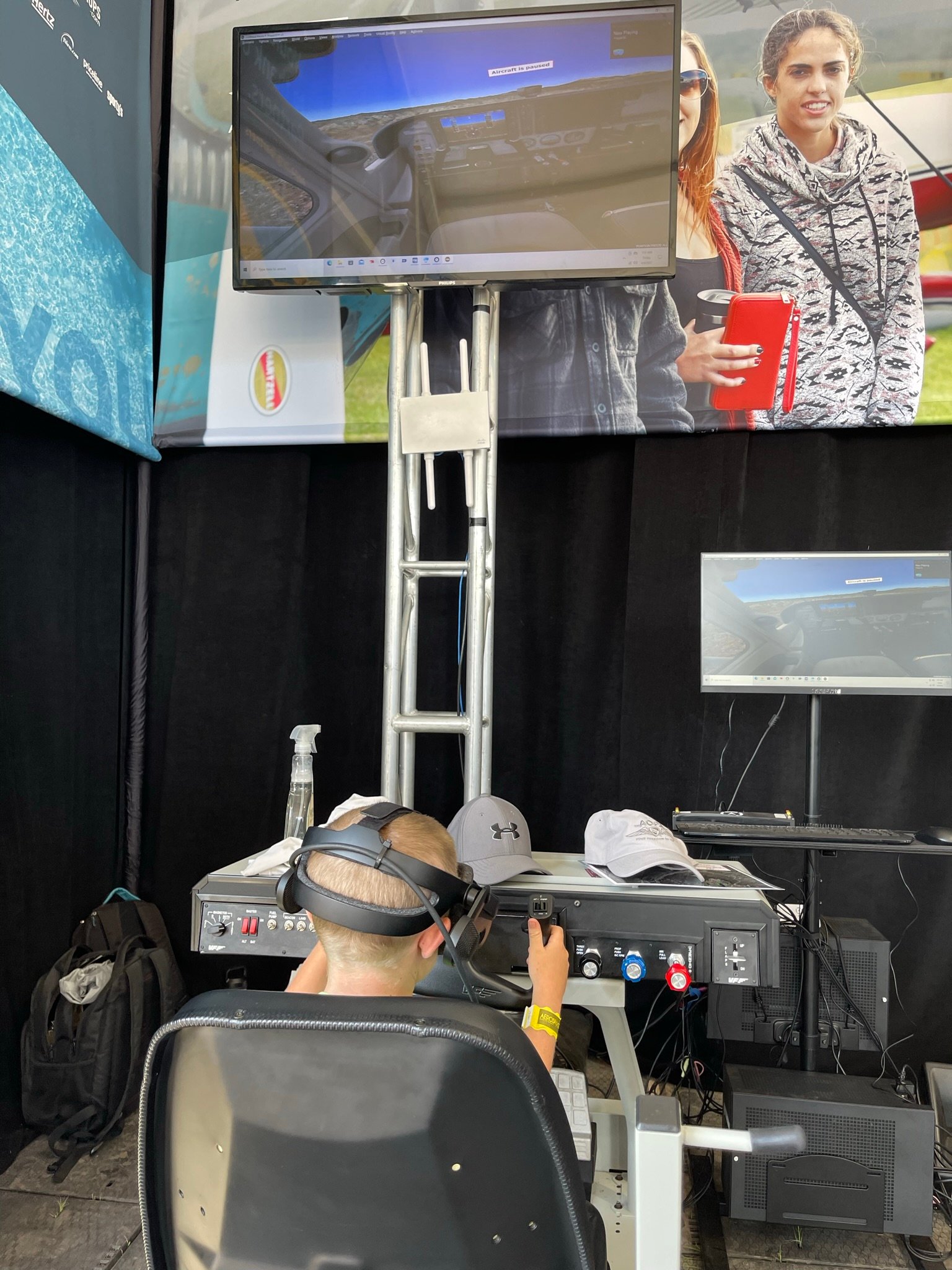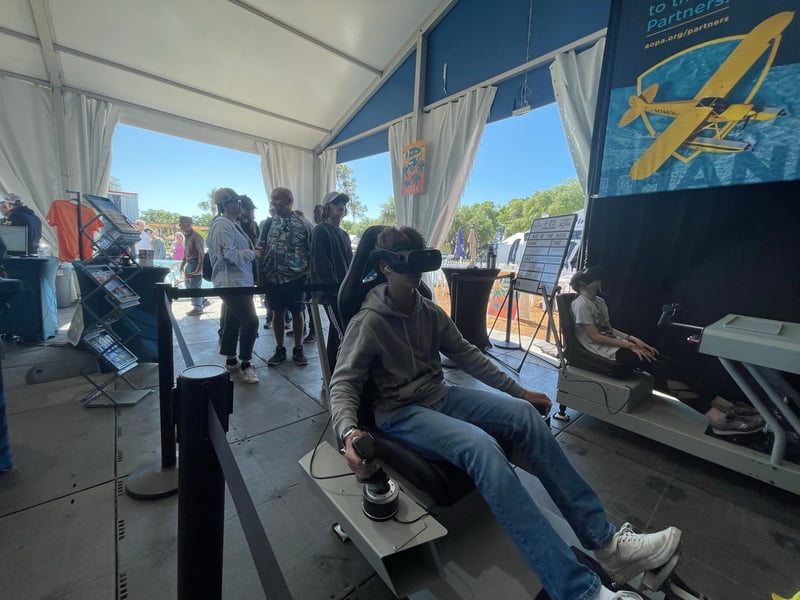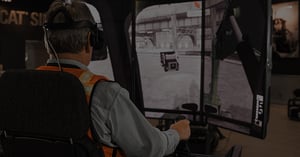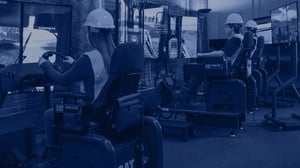THE TCS APPROACH: READ, WATCH, DO, FLY
With a whole team of educators behind the creation of TCS, they know that the foundation of a good learning model is to cover every student’s mode of learning in the curriculum: whether they are visual learners, oral learners, sensory learners or if they learn best through hands-on experiences, the TCS curriculum provides students with the tools they need to succeed.
The way Bédard sees it, his students should arrive in a physical plane in a mental state that allows them to be alert and to absorb new information, not in a mental state of stress distracting them from learning.
He explains that his simulators allow his students to have this state of mind by comparing the concept to when one learns how to drive. Most of us grow up around cars, so when it comes time to drive them ourselves, we have a basic understanding of how they work from our exposure. As a result, we’re less overwhelmed the first few times behind the wheel!
This is why Bédard came up with what he calls the ‘read, watch, do, fly’ approach. His students will first read the theory, watch instructional videos, perform the maneuvers in the haptic simulator and then do them in a real plane.
This accomplishes the ultimate goal of the training program at TCS: to familiarize students with aircraft so that they know the look and feel of flying it before they step foot in the cockpit, allowing them to concentrate on the new knowledge and not the overwhelming anxieties of doing something new.
The importance of ‘do’
One of the reasons why getting students in a simulator alongside a real plane is so important because it allows them to remain calm when they need to consult their mental checklists—which are one of the most crucial parts of aviation.
The plethora of checklists that pilots learn are essential to ensuring that the proper processes and flows are followed during every flight, ensuring the safety of both pilot and passengers!
This means that when a flight isn’t going as planned, the pilot needs to be able to instantly shift to a different checklist to solve the problem, but students oftentimes don’t get the opportunity to practice doing this as they will not intentionally be put in planes with stalled engines or with engines that will start losing power mid-flight.
In a simulator, students can ‘do’ whatever—meaning that they can practice flying a plane with stalled engines, they can practice emergency landings in mountainous terrains, and they can practice any type of emergency scenario that can come up. When they put on the VR helmets and experience the haptic feedback, the situation will feel very real to them, but they’re able to learn these procedures in complete safety and under professional supervision!

The market gap: adding realism to ‘do’
When looking at the best hardware for his simulators, Bédard realized that there wasn’t one that was currently on the market that quite met their needs. He knew that in order for the TCS curriculum to succeed, they needed to find the motion solution that would provide students with the most realistic flight experience possible!
Their search brought them to realize early on that haptic feedback was essential because without it, the sensations critical to pilot and passenger safety would be impossible to replicate. This is what prompted Bédard to remember when Claude Mc Master, the founder of D-BOX, had asked him to consult on originally integrating D-BOX’s haptic technology into aviation back when he was working with the United States Airforce. The rest, as they say, was history!
Integrating D-BOX haptics into the TCS flight solution
Today, TCS uses D-BOX haptics in all of their simulators to provide realism, to reduce VR sickness and to bring their VR simulations to a whole new level.
As Bédard explained, “I’ve been working with D-BOX since before True Course Simulations was a company. The partnership we have developed in creating our simulators has been outstanding and there is nothing else out there that competes with the D-BOX level of realism.”
This realism helps keep students in the moment, allowing them to truly feel the mission they are flying and keeps them engaged in the flight because even though it’s virtual, the simulation is so realistic that they truly feel physically connected to their aircraft!
Working in unison with VR goggles, D-BOX’s high-fidelity haptic feedback provides the user with an extremely high level of immersion that results in an extremely high level of education!
An experience like no other for students
As helping them learn is their ultimate goal, TCS constantly seeks feedback from their students to gather how they can learn better and to hear what they think of the haptic simulation experience.
As Sam Lama, one of the students at TCS recently told them, “D-BOX has created a product that provides the realism necessary to make virtual reality flight training effective.”
Lama would go on to say in his feedback that “in TCS’ training, students can see and feel the flight maneuver that they’re performing. The sensations are extremely accurate to what is felt in the real world and range from light vibrations in cruise flight to large movements in response to drastic control inputs. The sensations provide the students with the correct ‘seat of the pants’ feeling that allows for a flawless transition to the real airplane! Coupling the D-BOX with virtual reality has had a noticeable impact on the amount of time required to achieve solo flight and a pilot certificate!”
The future of TCS
Though simulation can never fully replace real flight, if done correctly it can reduce the overall cost to the student, provide situations that are too risky to practice in a real aircraft and provide the perfect complement to help train more efficient pilots!
This is why in the future, TCS has their eyes on incorporating their training solution into high school curriculums—they want to be able to show kids that there’s a future in STEM (science, technology, engineering and mathematics) and that their love of video games could translate into a real-life career if they want it to.
They believe that not only would a class like this be extremely popular, but that the completion of the course would then allow them to take these skills to a local flight school and instructor! That way, by the time they reach college age, they’ll already have the pilots license giving them a step up over others in STEM—and it will all be thanks to TCS’s impressive simulation curriculum.
LEARN MORE ABOUT TRUE COURSE SIMULATIONS



